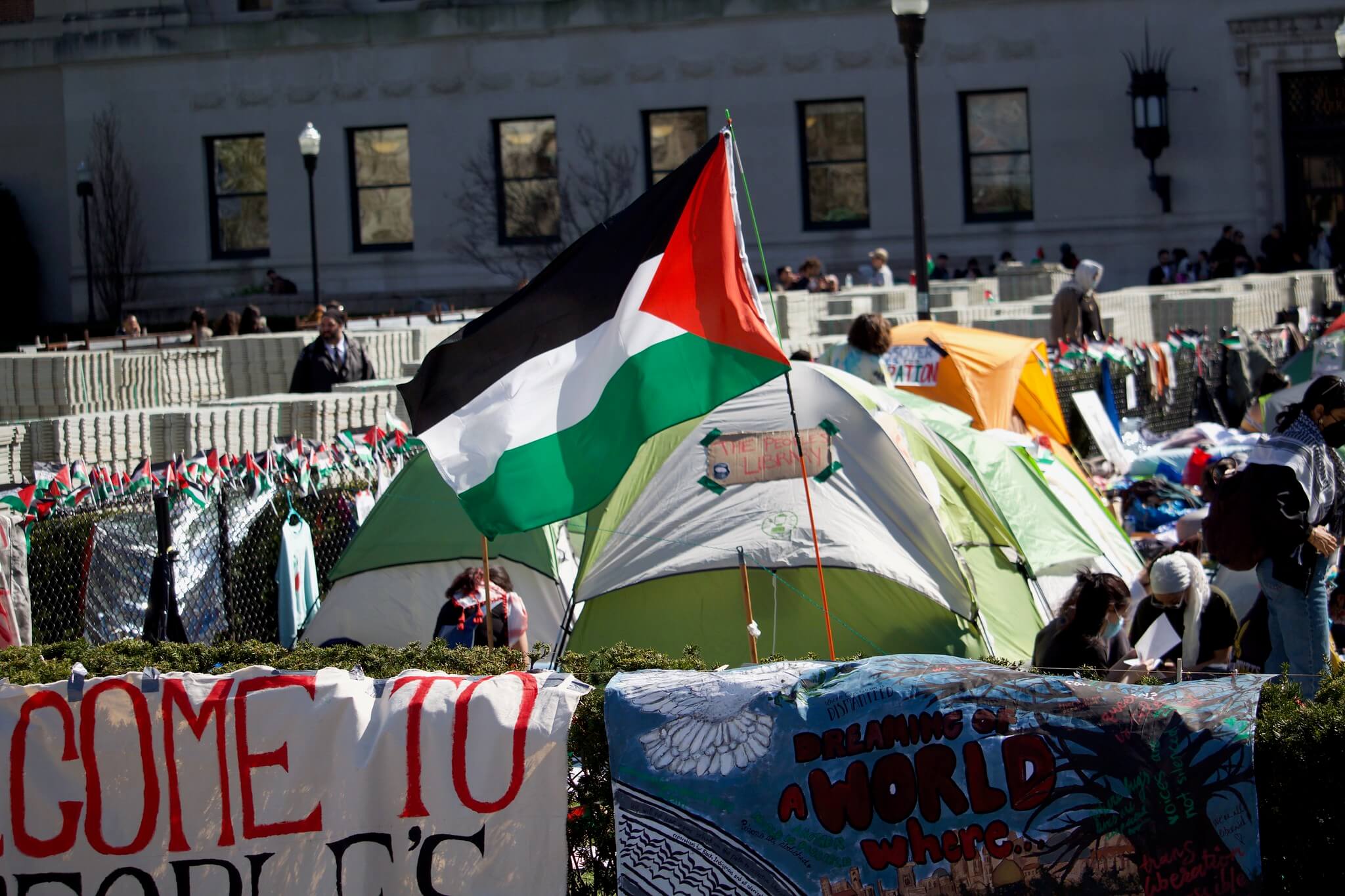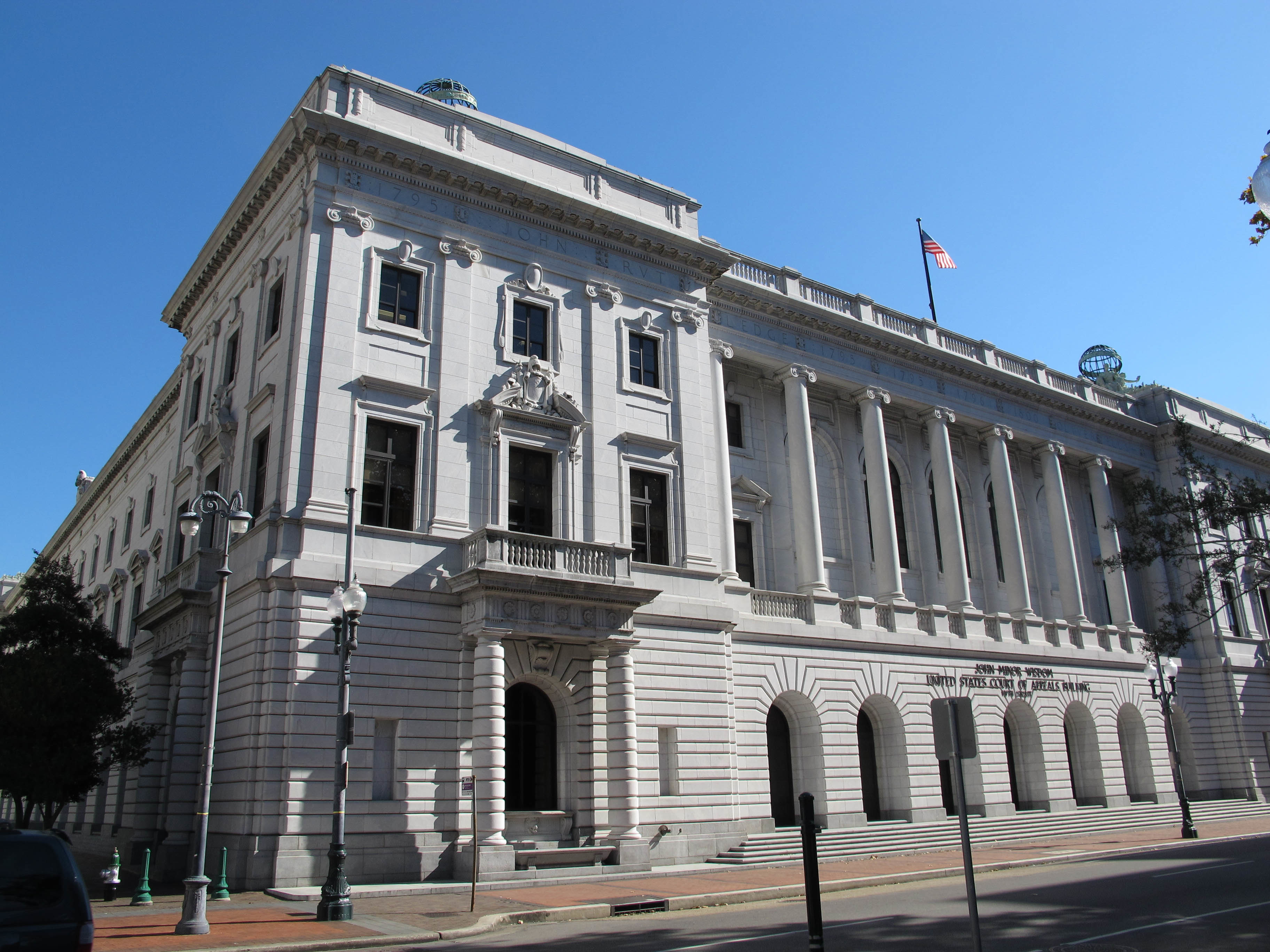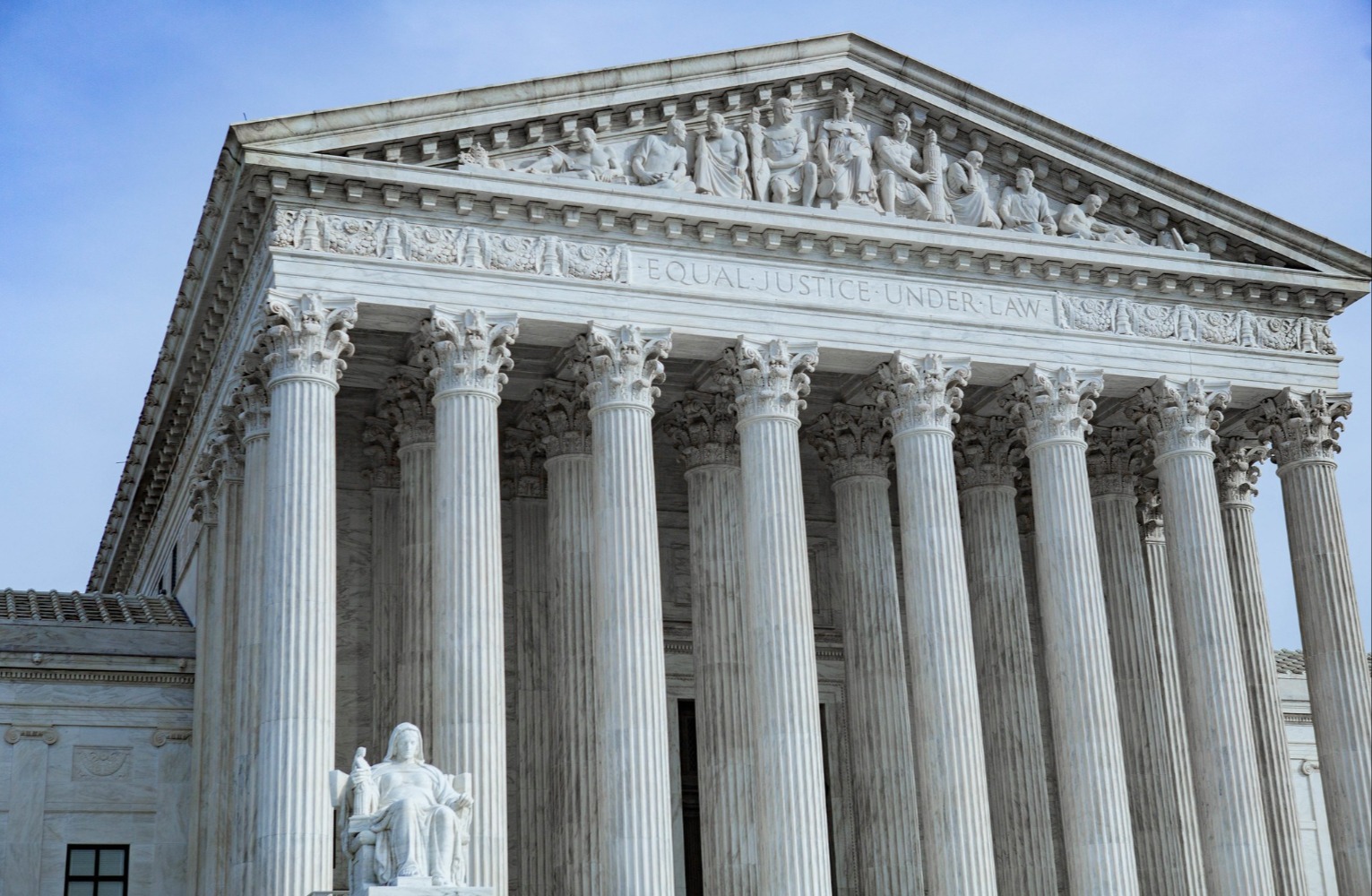The Anti-Terrorism Act Is Being Weaponized to Harass Israel’s Critics
A recent complaint accusing Columbia’s pro-Palestine groups of being “Hamas’s propaganda” arm is the latest in a string of frivolous ATA lawsuits.

Published by The Lawfare Institute
in Cooperation With

In 2016, Congress expanded the Anti-Terrorism Act (ATA) to allow private parties to sue anyone who “aids and abets” acts of international terrorism. While the law’s stated aim was to combat terrorism, it has been repurposed by pro-Israel groups who have used the provision to file nuisance claims—often with financial backing from the Israel Ministry of Strategic Affairs—against pro-Palestinian groups and causes.
One such lawsuit alleged that a U.S. charity aided and abetted Hamas’s terrorist operations by supporting the BDS movement, a polarizing but avowedly nonviolent movement that advocates boycotts, divestments, and sanctions as a means of pressuring Israel to comply with international law. Another lawsuit accused a nonprofit organization, UNRWA USA, of aiding and abetting the Oct. 7 attacks by raising humanitarian aid (alongside 72 countries, Save the Children, and the World Diabetes Foundation) for the UN Relief and Works Agency—the UN agency tasked with providing education, health care, and food assistance to Palestinian refugees. Another legal action claimed that the Associated Press aided and abetted Hamas’s terrorist operations by purchasing a photograph from a freelance photographer who, years earlier, was anonymously accused of sympathizing with Hamas. And a lawsuit in Virginia alleged that a private foundation and student coalition aided and abetted Oct. 7 by disseminating purportedly “pro-Hamas” propaganda after the attacks were completed.
None of these lawsuits have survived a motion to dismiss—a procedural step that asks whether the complaint’s allegations, if true, would state a legal violation. In a withering opinion upholding the dismissal of the BDS suit, the U.S. Court of Appeals for the D.C. Circuit observed that the plaintiffs’ “attempt to establish aiding-and-abetting liability fail[ed] at every turn.” The order dismissing the AP case was equally definitive. Motions to dismiss are currently pending in the UNRWA USA case (in which I am counsel) and the Virginia action.
This string of failures, though, has not deterred ATA litigants.
In late March, the National Jewish Advocacy Center and the International Legal Forum—an Israeli-government-funded group—filed its newest ATA lawsuit, this time targeting pro-Palestinian student groups at Columbia. The complaint accuses the students of aiding and abetting Hamas’s terrorist operations by signing petitions, participating in rallies, and posting on social media; of having advance knowledge of the Oct. 7 attacks; and of acting as Hamas’s “U.S.-based in-house public relations firm” and “expert propagandists and recruiters.”
Like the other complaints, this one comes nowhere close to satisfying the ATA’s requirements. The fact that the plaintiffs would file a suit with no prospect of proceeding to discovery, much less yielding a judgment, suggests its real purpose: to generate negative press coverage of pro-Palestine protesters, brand them as adjuncts of Hamas in the public imagination, and muzzle campus critics of Israel. The complaint is, in essence, a press release with a docket number.
The lawsuit’s legal shortcomings abound. To establish ATA liability, the plaintiffs must first identify an act of “international terrorism”—that is, an act that is “dangerous to human life” and occurs “primarily outside” the United States—which was (a) committed by an entity designated by the U.S. government as a foreign terrorist organization (FTO) and which (b) directly injured the plaintiffs. Then they must establish that the students provided “knowing” and “substantial” assistance to that attack. This is a high bar. As the Supreme Court explained recently, ATA aiding-and-abetting requires “conscious, voluntary, and culpable participation” in the FTO’s terroristic activities, “so as to help make [the terrorist attack that injured the plaintiffs] succeed.” In other words, the students must have actually “helped” Hamas “complete its commission” of the international terrorist attacks that injured them, and they must have intended to do so.
The threshold question, then, is this: What terrorist act did the student groups allegedly assist?
The complaint alleges that protesters “terrorized” Jewish students by posting and chanting “pro-Hamas” slogans, pitching tents on the main campus, and occupying administrative buildings. But even if one fully accepts the complaint’s rendering of events, these actions, at most, give rise to possible harassment and civil rights claims. Whatever one’s opinion about the slogans and encampments, such actions are not “acts of international terrorism.”
The complaint identifies only two qualifying “acts of international terrorism”—Oct. 7 itself and Hamas’s militant operations following Oct. 7—but it falls short of explaining how the students assisted either sets of attacks.
The weaknesses in the Oct. 7 allegations are apparent on their face. All the student conduct described in the complaint postdates Oct. 7; and even if rallies and social media posts could meet the high legal threshold for aiding and abetting, there’s a basic temporal problem: One cannot aid or abet an attack through conduct that occurs after the attack has already concluded.
The complaint insinuates complicity by claiming that the student groups “had prior knowledge of the October 7 attack.” But mere knowledge is not enough to establish aiding and abetting. And the notion that hundreds, if not thousands, of American college students were forewarned of an attack that blindsided Israel and its allies—or that Hamas would entrust its clandestine battle plans to a coalition of college activists—beggars belief.
The “evidence” cited in the complaint only underscores the claim’s absurdity. The complaint’s theory of advance knowledge rests on three things: a doctored Instagram post purporting to show a student group announcement, mere “minutes before” the Oct. 7 attacks began, that it would soon hold its first meeting of the semester (a timing the complaint calls “highly suggestive,” even though the group waited until October in prior years to announce its first meeting); the fact that 83 pro-Palestinian groups had signed a petition within 20 hours of the attacks (which the plaintiffs implausibly suggest is too little time to gather signatures without advance planning); and a “manifesto,” circulated on Oct. 8, that included depictions of the paragliders that Hamas used in the attacks (which the plaintiffs, apparently unaware of AI image generators, suggest was an impossibly quick turnaround). These are deeply unserious foundations for a profoundly serious allegation.
The complaint’s claim that the student groups aided and abetted Hamas’s violent activities after Oct. 7 is similarly lacking. The complaint doesn’t allege that the student groups sent funds or supplies or actually recruited anyone to travel to Gaza to fight with Hamas. Instead, its theory is that the students aided and abetted Hamas through their public advocacy efforts. The plaintiffs accuse the students of purveying “objectively false propaganda” about Israel being a “genocidal apartheid state,” and by signing petitions declaring “support [for] the resistance” and “liberation”—all to “sway public opinion against Israel and toward Hamas.” In this respect, the plaintiffs state outright what most litigants at least attempt to disguise: that the complaint seeks to punish politically objectionable speech.
Parenthetically, one cannot plausibly call accusations of genocide and apartheid “objectively false propaganda” when Israeli human rights nongovernmental organizations, Israel’s third-largest newspaper, and the International Court of Justice have concluded that Israel is maintaining an apartheid; when hundreds of scholars, including genocide and Holocaust studies professors, and Amnesty International have opined that Israel’s actions in Gaza constitute genocide; when there is a pending genocide case before the International Court of Justice and a U.S. federal court has found that the allegations of genocide were at least “plausible”; and when Israeli Prime Minister Benjamin Netanyahu’s cabinet members are openly calling for the “total annihilation” of Gaza’s cities.
More to the point, the complaint doesn’t bother to explain how the student groups’ activities aided Hamas’s attacks. It offers no evidence, nor does it even suggest, that Hamas takes tactical cues from Columbia’s student protesters. It does not assert that the students’ advocacy emboldened Hamas or in any way furthered its ability to engage in terrorism. It doesn’t even allege that the student groups’ activities improved Hamas’s image, nor could it, given evidence that the coverage of the protests has swayed Americans in the opposite direction.
The complaint also runs headlong into the First Amendment, which prohibits private parties from using the courts to penalize speakers for engaging in speech designed to influence public opinion. To be sure, there are exceptions to that prohibition—but none that apply here. For example, the First Amendment doesn’t protect speech that is “integral to criminal conduct.” If a protester wanted to sway public opinion by torching a building, the law wouldn’t protect the protester who instructed arsonists on how to light the fire. But the complaint doesn’t point to any speech that falls within this exception. Neither does the First Amendment protect incitement, but the complaint doesn’t allege that either. The complaint recounts statements that many construe as calls for violence (e.g., “Globalize the Intifada”), but the Supreme Court has held time and time again that advocating violence is not, itself, incitement. Instead, the speech must be intended and likely to produce imminent lawlessness. To grasp how narrow this category is, here are some examples the Court has held do not qualify as incitement: a KKK leader who stands before a crowd of armed, hooded members and calls for “revengeance” against the government; an anti-war protester who yells out, “We’ll take the fucking street later”, to a 150-strong mob that was ordered to disperse after illegally blocking traffic; and an NAACP leader who tells his followers, in the midst of a boycott, that they will “break [the] damn neck” of anyone who went “in any of them racist stores.”
If direct calls for violence by a mob leader standing mere feet from armed supporters doesn’t constitute incitement, then student protesters praising the Intifada from 6,000 miles away doesn’t either.
There is a final exception to the general rule that no one can be penalized for public advocacy. In a 2010 case, Holder v. Humanitarian Law Project, the Supreme Court upheld a different part of the ATA that criminalized “advocacy performed in coordination with, or at the direction of, a foreign terrorist organization.” The plaintiffs try to stuff their claims into this exception by claiming that Hamas was directing the student protesters’ activities. If the government could prosecute the student groups for coordinated advocacy, they argue, surely private plaintiffs can sue over such advocacy.
Virtually everything about this theory is incorrect. First, the complaint offers zero evidence supporting its claim that Hamas was directing the student protesters. Second, Humanitarian Law Foundation actually confirmed that coordinated advocacy is generally subject to First Amendment protections; all that case held was that the government could overcome those protections when bringing a criminal prosecution under a specific provision of the material support statute. Nowhere did that decision suggest that private litigants can sidestep the First Amendment and sue individuals for engaging in coordinated advocacy.
Third, even if the advocacy efforts had been coordinated and even if the First Amendment didn’t apply, that still wouldn’t salvage the aiding and abetting claims. Coordinated advocacy is its own legal category, and much of it falls short of aiding and abetting, as the Supreme Court has defined the term. Consider, for example, a case where someone helps Hamas place an op-ed advocating for more medical supplies to Palestinian refugee camps in Syria: That would be prosecutable coordinated advocacy, but it’s not knowing and substantial assistance to a terrorist attack. Point being, the plaintiffs would still have to demonstrate that the students’ supposedly coordinated advocacy facilitated the specific terrorist attacks that injured them—something they cannot do.
Given its myriad shortcomings, there is little doubt that the case will be thrown out. But these lawsuits needn’t proceed to trial or result in a verdict to chill criticism of Israel. For some unknowable share of the population, the cost of hiring a lawyer and the stigma of a terrorism accusation is enough to induce self-censorship. Perhaps the only silver lining is that the dismissals are accumulating quickly and, at some point in the not-too-distant future, the precedential landscape may become so inhospitable to these claims that judges will begin to impose financial sanctions on frivolous ATA litigators.





